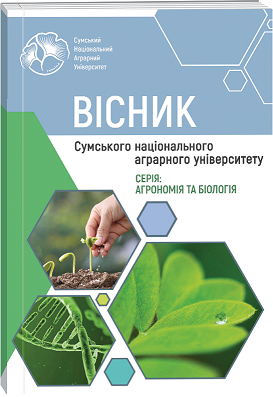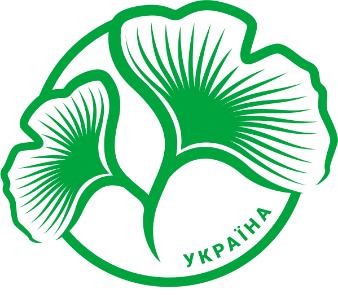INFLUENCE OF PRE-HARVEST PREPARATION OF CROPS ON THE QUALITY OF QUINOA SEED
Abstract
Quinoa seeds have a short dormancy period or no one, sometimes they be able to germinate on the maternal plant. This process is facilitated by rainy, humid weather. Such seed characteristics have a number of negative consequences: deterioration of the crop quantity, quality reduction of the seed material. To optimize the growing of many cultivated plants, innovative measures have been developed to increase the production and quality of seeds. The use of herbicidal desiccants is a reasonable alternative for producers, with the aim of preserving the crop and minimizing the process of seed spoilage in the field condition. In addition, desiccation and senication play an important role in overcoming non-simultaneous ripening of seeds in crop. Carrying out pre-harvest desiccation of the crop requires a preliminary determination of the effectiveness of a certain substance, its dose and analysis of the influence of environmental factors. The research aimed to determine the effect of preharvest desiccation and senication on the quality of quinoa seeds. Experiments were carried out for 2021- 2023 on quinoa crop of Quartet variety, on the territory of the educational and scientific complex of the Sumy National Agrarian University. The area of the accounting plot was 15 m2, the experiment was repeated three times. Variants for preharvest treatment were: desiccation with Glyfovit Extra, 2.5 kg/ha; desiccation with Reglon Super, 2.5 l/ha; senication with a 16% solution of ammonium nitrate, 50.0 kg/ha; сontrol – without treatment. Before applying the pre-harvest treatment, the moisture content of the seeds was determined. Harvesting began in 20 days after treatment. The collected seeds were analyzed for moisture content, germination energy and laboratory germination. After sowing the seeds next season, the field germination was determined. The use of Reglon Super, Glyfovit Extra and ammonium nitrate for pre-harvest treatment revealed statistically significant differences in germination energy and laboratory germination. The best results of seed quality values (germination energy and laboratory germination) were achieved in the variant with pre-harvest senication: 85.72 and 88.34%. The preparations used in the experiment showed different effectiveness in terms of field germination of seeds, however, the indicators on all variants were higher compared to the control. Among the processing options, the highest field similarity was noted in the option with haying – 79.40%. The use of desiccation and senication as measures of pre-harvest seed treatment did not cause negative consequences for seed germination both in laboratory and field conditions. Desiccation with the preparations Glyfovit Extra and Reglon Super does not lead to a deterioration of the sowing properties of seeds, and senication has a positive effect, improves germination both in the laboratory and in the field.
References
2. Assis, M. O. Araujo, E. F., Freitas F. C. L, Silva, L. J., & Araujo, R. F. (2019). Pre-harvest desiccation in productivity and physiological quality of cowpea seeds Planta Daninha, 37:e019177741.
3. Bennett, A. C., & Shaw, D. R. (2000). Effect of preharvest desiccants on group IV Glycine max seed viability.Weed Sci., 48(4), 426–430. doi: 10.1614/0043-1745(2000)048[0426:EOPDOG]2.0.CO;2.
4. Bewley, D. J., Bradford, K., & Hillorst, H. (2013). Seeds: Physiology of Development, Germination and Dormancy, 3rd Edition. Springer. New York.
5. Bond, J. A., & Bollich, P. K. (2007). Effects of pre-harvest desiccants on rice yield and quality. Crop Pro., 26 (4), 490–494. doi: 10.1016/j.cropro.2006.02.017.
6. Bushulan, O. V. (2015). Vplyv desykatsii na posivni yakosti nasinnia ta urozhainist nutu [The effect of desiccation on seed quality and yield of chickpeas] Selektsiia i nasinnytstvo, 107, 154–159 (in Ukranian).
7. Čanak, P., Radić, V., Mrdja, J., Jocković, M., Ćirić, M., & Miklič, V. (2011). Effect of desiccation moment on 1000-seed weight in sunflower. Field and Vegetable Crops Research, 48, 391–396.
8. Čanak, P., Jocković, M., Vujošević, B., Babić, M., Mitrović, B., Stanisavljević, D. & Miklič, V. (2020). Sunflower seed germination and storability response to chemical desiccation. Selekcija i semenarstvo, 26 (2), 53-60. https://doi.org/10.5937/SelSem2002053C
9. Ceccato, D., Bertero, D., Batlla, D., & Galati, B. (2015). Structural aspects of dormancy in quinoa (Chenopodium quinoa): importance and possible action mechanisms of the seed coat. Seed Science Research, 239 (1), 1–9. doi:10.1017/S096025851500015X
10. Clarke, J. M. (1981). Effect of diquat, paraquat and glyphosate on preharvest drying of wheat. Can J Plant Sci., 61(4), 909–913. doi: 10.4141/cjps81-135.
11. Derzhavnyi reiestr pestytsydiv i ahrokhimikativ, dozvolenykh do vykorystannia v Ukraini. [State register of pesticides and agrochemicals approved for use in Ukraine] Ministerstvo zakhystu dovkillia ta pryrodnykh resursiv Ukrainy. (Nakaz № 135 vid 15.02.2022 roku) (in Ukranian).
12. DSTU 4138-2002 Nasinnia silskohospodarskykh kultur. Metody vyznachennia yakosti. [Seeds of agricultural crops. Methods of determining quality] Kyiv: Derzhspozhyvstandart Ukrainy, (2003), 173 (in Ukranian).
13. Esfahani, M, Fardi, M, Asghari, J., & Rabiei, M. (2012). Effects of pre-harvest application of parquat on grain moisture reduction, grain yield and quality of rapeseed (Brassica napus L.) cultivars. Caspian J. Environ Sci., 10 (1), 75–82.
14. He, Y., Cheng, J., Liu, L., Li, X, Yang, B, Zhang, H., & Wang, Z. (2015). Effects of pre-harvest chemical application on rice desiccation and seed quality. J. Zhejiang Univ. Sci., 16, 813–823.
15. Jaskulski, D., & Jaskulska, I. (2014). The effect of pre-harvest glyphosate application On grain quality and volunteer winter wheat. Romanian Agricultural Research, 31, 283–289.
16. Johnson, B. L., Larson, T. D., & Henson, R. A. (2004). Desiccation of stay-green and conventional sunflower, 213–217. Proc. 16th Int. Sunflower Conf., Fargo, USA.
17. Kaminskyi, V. F., & Bratseniuk, V. Ya. (2017). Vplyv sposobiv sivby ta peredzbyralnoi desykatsii na pokaznyky yakosti nasinnia sortiv soi riznykh hrup styhlosti v umovakh Zakhidnoho Lisostepu. [The influence of methods of sowing and preharvest desiccation on the quality indicators of soybean varieties of different maturity groups in the conditions of the Western Forest Steppe]. Visnyk Sumskoho NAU. Ser.: Ahronomiia i biolohiia, 9 (34), 81–85.
18. Kappes, C., Arf, O., Arf, M. V., Ferreira, J. P., Alcalde, A. M., & Portugal, J. R. (2012). Produtividade de feijoeiro de inverno submetido à dessecação com paraquat na pré-colheita. Rev. Ceres., 59, 56–64.
19. K'Opondo, F. B. O. (2011). Influence of drying method and fruit position on the mother plant on seed quality of spiderplant (Cleome gynandra L.) morphotypes from western Kenya. Adv Appl Sci Res., 2(3), 74–83.
20. Marcos-Filho, J. (2015). Seed Physiology of Cultivated Plants. 2nd Edition, ABRATES, Londrina, 660.
21. Menezes Junior, J. A. N., Rocha, M. M., Silva, K. J. D., & Bertini, C. H. C. M. (2017). Colheita, 244-267. In DoVale, J.C., C. Bertini, and A. Borém (Eds.). Feijão-caupi: do plantio à colheita. Editora UFV, Viçosa, Brasil.
22. Miklič, V., Dušanić, N., & Crnobarac, J. (2001). Effect of desiccation date on some parameters of quality in hibrid sunflower seed. Zbornik radova Instituta za ratarstvo i povrtarstvo, 35, 251–258.
23. Miklič, V., Crnobarac, J., Dušanić, N., & Joksimović, J. (2004). Effect of time of desiccation on some quality parameters of sunflower seed, 219–224. Proc. 16th Int. Sunflower Conf., Fargo, USA.
24. Miklič, V., Crnobarac, J. Joksimović, Dušanić, J. N., Vasić, D., & Jocić, S. (2006). Effect of harvest date on seed viability of different sunflower genotypes. Helia, 29(44), 127–134.
25. Miller, T. W. (2002). Diquat used as a preharvest desiccant affects seed germination of spinach, table beet, and coriander. HortScience, 37(7), 1032–1034.
26. Nogueira, F. C. B., Gallão, M. I., Bezerra, A. M. E., & Medeiros Filho, S. (2014). Efeito da temperatura e luz na germinação de sementes de Dalbergia cearensis Ducke. Ciência Florestal, 24(4), 997–1007. doi: 10.1590/1980-509820142404019 271
27. Pereira, T., Coelho, C. M. M., Sobiecki, M., & Souza, C. A. (2015). Physiological quality of soybean seeds depending on the preharvest desiccation. Planta Daninha, 33(3), 441–450. doi: 10.1590/S0100-83582015000300007
28. Rosa, W. B., Duarte Junior, J. B. Perego, I., de Almeida, B. H., da Costa, A. C. T., & Tomm, G. O. (2019). Agronomic performance of canola submitted to desiccation with herbicides at different maturation stages. Revista Brasileira de Engenharia Agrícola e Ambiental, 23(6), 419–424. doi: 10.1590/1807-1929/ agriambi.v23n6p419-424
29. Shynkaruk, L., & Lykhochvor, V. (2021). Effect of desiccant application on preharvest humidity of medium-early hybrid LG 3258 corn in Western Forest-Steppe conditions. Scientific Horizons, 24(12), 32–38.
30. Szemruch, C. L, Cantamutto, M. A, García, F. A, Aguirre, M., Renteria, S. J. & Rondanini, D. P. (2017). Hybrid sunflower seed yield, composition and deterioration after chemical desiccation. Int. J. Plant Prod., 11 (2), 225–240.
31. Zampar Toledo, M., & Ceccon, G. (2023). Pre-harvest desiccation for producing high quality cowpea seeds. Chilean journal of agricultural & animal sciences, 39(3), 266–275. doi: 10.29393/chjaa39-23pdmg20023
32. Tränkner, M., Tavakol, E., & Jákli, B. (2018). Functioning of potassium and magnesium in photosynthesis, photosynthate translocation and photoprotection. Physiologia Plantarum, 163, 414–431. doi: 10.1111/ppl.12747
33. Zuffo, A. M., Santos, M., Oliveira, I. C., Alves C. Z., Aguilera J. G., & Teodoro, P. E. (2019). Does chemical dessication and harvest time affect the physiological and sanitary quality of soybean seeds. Rev. Caatinga, 32 (4), 934–942.

 ISSN
ISSN  ISSN
ISSN 



